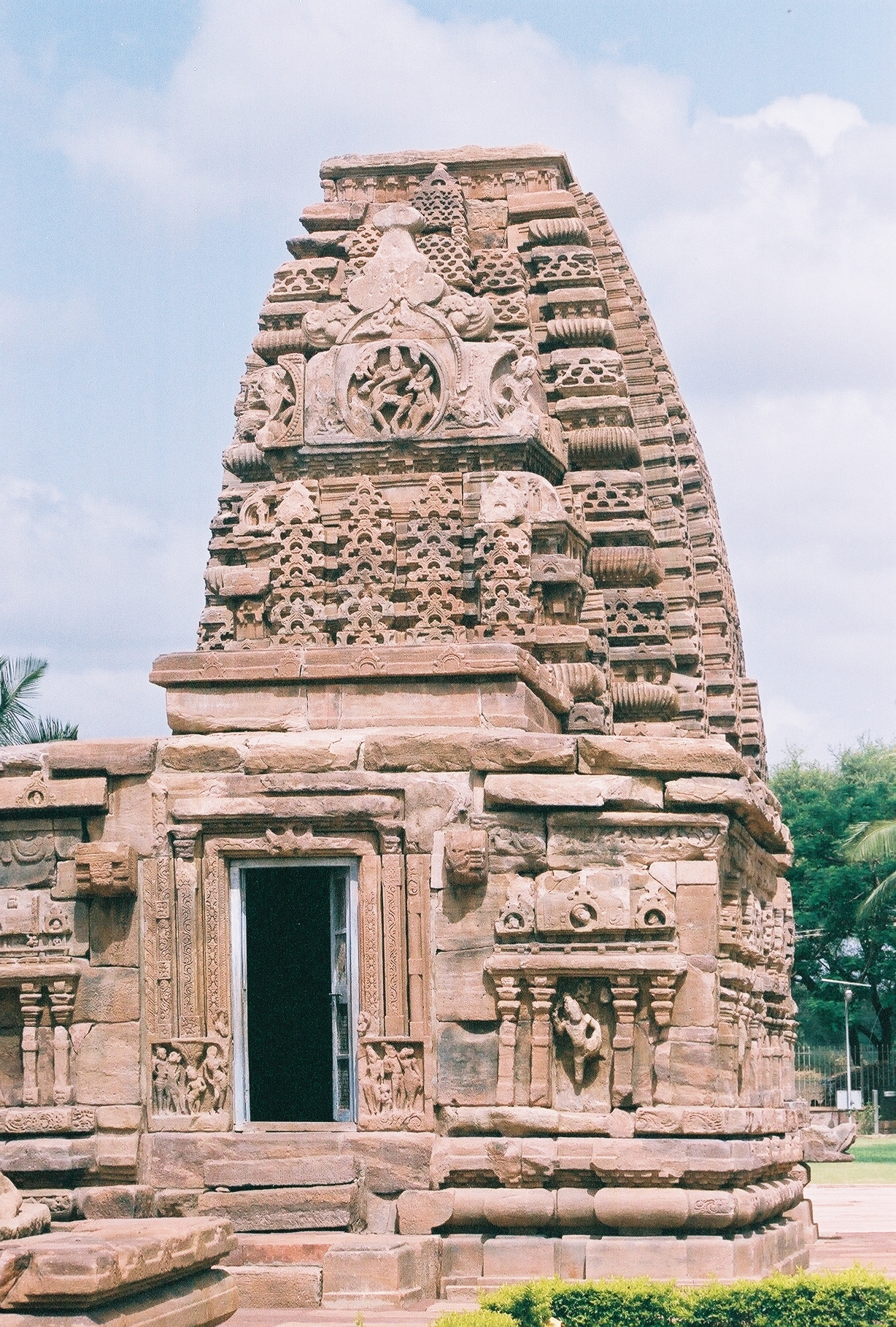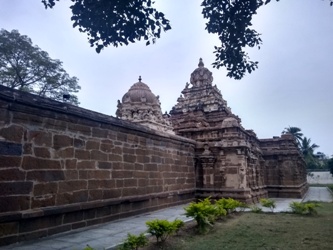|
Dantidurga
Dantidurga (reigned 753–756 CE), also known as Dantivarman II was the founder of the Rashtrakuta Empire of Manyakheta. Reu (1933), p54 His capital was based in Gulbarga region of Karnataka. His successor was his uncle Krishna I who extended his kingdom to all of Karnataka. The Ellora record of Dantidurga narrates that he defeated the Chalukyas in 753 and took the titles ''Rajadhiraja'' and ''Parameshvara''. The inscription calls him son of Indra II. The Samangad inscription (modern Kolhapur district, Maharashtra) states his mother was a Chalukyan princess from Gujarat called Bhavanaga. The same inscription states he defeated the infinite and invincible ''Karnataka-Bala'' (Karnataka army) of the Badami Chalukyas.Kamath (2001), p74He defeated the great Karnatik army of the Chalukyas, (Reu, 1933 p54) Further he defeated the kings of Lata (Gujarat), Malwa, Tanka, Kalinga and Sheshas (Nagas) in central India and performed many sacrifices.Reu (1933), p55 Though he conquered ... [...More Info...] [...Related Items...] OR: [Wikipedia] [Google] [Baidu] |
Kirtivarman II
Kirtivarman II also known as Rahappa (reigned 746 – 753 CE) was the last ruler in the Badami Chalukya dynasty. He succeeded his father Vikramaditya II. His reign was continuously troubled by the growing power of the Rashtrakutas and Pandyas and finally succumbed to them. Conflict with the Pandyas Kirtivarman and his Ganga feudatory Sripurusha came into conflict with the Pandya ruler Maravarman Rajasimha I who was extending the Pandya empire on to the Kongu country which was adjacent to the Ganga kingdom. Rajasimha crossed the Kaveri and engaged Kirtivarman and Sripurusha in a big battle at Venbai on the banks of the river Kaveri. The Chalukya king was defeated. Diminishing power Kirtivarman was steadily undermined by the activities of Rashtrakuta Dantidurga who was establishing the Rashtrakuta Empire. Dantidurga was a feudatory of the Chalukyas and was beginning to establish an independent kingdom around Ellora. Kirtivarman II was plagued by intense outside pressure: ... [...More Info...] [...Related Items...] OR: [Wikipedia] [Google] [Baidu] |
Krishna I
Krishna I () (r. 756 – 774 CE), an uncle of Dantidurga, took charge of the growing Rashtrakuta Empire by defeating the last Badami Chalukya emperor Kirtivarman II in 757. This is known from the copper plate grant of Emperor Govinda III of 807 and a copper plate grant of the Gujarat Rashtrakuta ruler Karka from Baroda. Reu (1933), p57 He is also known as Kanhardeva or Kanhesvara and took the titles ''Akalavarsha'', ''Shubatunga'', ''Prithvivallabha'' and ''Shrivallabha.''He patronised the famous Jain logician Akalanka Bhatta, the author of ''Rajavartika''. Some historians are of the opinion that Krishna I usurped the throne from his nephew Dantidurga.Vincent Smith in Reu (1933), p58 But others disagree as the term "demise of Dantidurga" occur in the Kavi and Navasari copper plates indicating Krishna I must have ascended the throne after the death of Dantidurga. However, from the Baroda inscription it seems that Krishna I may have had to subdue another claimant to the th ... [...More Info...] [...Related Items...] OR: [Wikipedia] [Google] [Baidu] |
Rashtrakuta Empire
The Rashtrakuta Empire was a royal Indian polity ruling large parts of the Indian subcontinent between the 6th and 10th centuries. The earliest known Rashtrakuta inscription is a 7th-century copper plate grant detailing their rule from Manapur, a city in Central or West India. Other ruling Rashtrakuta clans from the same period mentioned in inscriptions were the kings of Achalapur and the rulers of Kannauj. Several controversies exist regarding the origin of these early Rashtrakutas, their native homeland and their language. The Elichpur clan was a feudatory of the Badami Chalukyas, and during the rule of Dantidurga, it overthrew Chalukya Kirtivarman II and went on to build an empire with the Gulbarga region in modern Karnataka as its base. This clan came to be known as the Rashtrakutas of Manyakheta, rising to power in South India in 753 AD. At the same time the Pala dynasty of Bengal and the Prathihara dynasty of Gurjaratra were gaining force in eastern and northweste ... [...More Info...] [...Related Items...] OR: [Wikipedia] [Google] [Baidu] |
Nandivarman II
Nandivarman II (718 CE – 796 CE) was a Pallava monarch who reigned in southern India. Sen states Nandivarman reigned from 731 CE to 796 CE and built the Vaikuntha-Perumal Temple. He was born in the country of Champa (present-day Vietnam), in Simhapura into a local dynasty of Pallava origin and was elected as the Pallava monarch at the age of 13. Biography Paramesvaravarman II was succeeded by a 12-year old Nandivarman II Pallavamalla who belonged to a collateral line of Pallavas called the Kadavas. The latter were the descendants of Bhimavarman, the brother of Simhavishnu. According to epigraphical findings, Hiranyavarman, the father of Nandivarman Pallavamalla belonged to the Kadavakula. Nandivarman II himself is described as "one who was born to raise the prestige of the Kadava family". He has commissioned the Tiru Parameswara Vinnagaram. The term ''Kaduvetti'' in Tamil means ''destroyer or clearer of forests'' as the Pallavas like their ancestor Mukkanti Kaduve ... [...More Info...] [...Related Items...] OR: [Wikipedia] [Google] [Baidu] |
History Of Karnataka
The History of Karnataka goes back several millennia. Several great empires and dynasties have ruled over Karnataka and have contributed greatly to the history, culture and development of Karnataka as well as the entire Indian subcontinent. The Chindaka Nagas of central India Gangas, Rashtrakutas of Manyakheta,Dr. D.R. Bhandarkar argues that even the viceroys (''Dandanayaka'') of the Gujarat line hailing from the Rashtrakuta family signed their Sanskrit records in Kannada, examples of which are the Navasari and Baroda plates of Karka I and the Baroda records of Dhruva II. The Gujarat Rashtrakuta princes used Kannada signatures as this was the mode of writing in their native country, meaning Kannada country says Dr. Bhandarkar, ''A Concise History of Karnataka'', Dr. Suryanath U. Kamath Chalukyas of Vengi, Yadava Dynasty of Devagiri were all of Kannada origin who later took to encouraging local languages. In the medieval and early modern periods, the Vijayanagara Empire and th ... [...More Info...] [...Related Items...] OR: [Wikipedia] [Google] [Baidu] |
Chalukyas
The Chalukya dynasty () was a Classical Indian dynasty that ruled large parts of southern and central India between the 6th and the 12th centuries. During this period, they ruled as three related yet individual dynasties. The earliest dynasty, known as the "Badami Chalukyas", ruled from Vatapi (modern Badami) from the middle of the 6th century. The Badami Chalukyas began to assert their independence at the decline of the Kadamba kingdom of Banavasi and rapidly rose to prominence during the reign of Pulakeshin II. After the death of Pulakeshin II, the Eastern Chalukyas became an independent kingdom in the eastern Deccan. They ruled from Vengi until about the 11th century. In the western Deccan, the rise of the Rashtrakutas in the middle of the 8th century eclipsed the Chalukyas of Badami before being revived by their descendants, the Western Chalukyas, in the late 10th century. These Western Chalukyas ruled from Kalyani (modern Basavakalyan) until the end of ... [...More Info...] [...Related Items...] OR: [Wikipedia] [Google] [Baidu] |
Samangad
Samangad is a hill fort in Kolhapur District, Maharashtra. It is above sea level. The fort is situated on the oval-shaped top of the hill. The eight-foot-high wall of the fort which encircled the hill top is still intact. Earlier several cisterns cut out of the rock ensured a plentiful supply of water to the fort but by 1957 most of them were in ruins. The Samangad grant, which belongs to the seventh Rashtrakuta king Dantidurga or Dantivarma II, bears the date ''sak'' 675 (A.D. 733–54). In 1676, the fortifications were considerably improved by Shivaji, subsequent to which it was known as one of the "smallest yet strongest forts" of the great Marathas. In 1844, the Samangad garrison rebelled and took over the fort, shutting the gates. But it was stormed by the British Raj The British Raj ( ; from Hindustani language, Hindustani , 'reign', 'rule' or 'government') was the colonial rule of the British The Crown, Crown on the Indian subcontinent, * * lasting from 1858 to 1 ... [...More Info...] [...Related Items...] OR: [Wikipedia] [Google] [Baidu] |
756 Deaths
__NOTOC__ Year 756 ( DCCLVI) was a leap year starting on Thursday of the Julian calendar, the 756th year of the Common Era (CE) and Anno Domini (AD) designations, the 756th year of the 1st millennium, the 56th year of the 8th century, and the 7th year of the 750s decade. The denomination 756 for this year has been used since the early medieval period, when the Anno Domini calendar era became the prevalent method in Europe for naming years. Events By place Byzantine Empire * Byzantine–Bulgarian War: Emperor Constantine V builds a series of fortifications along the Byzantine frontier on the Danube, and starts settling Christian Armenians and Syrians in the Thracesian Theme. In response, Kormisosh, ruler (''khagan'') of the Bulgarian Empire, demands the payment of tribute. Constantine refuses, and the Bulgars raid into Thrace, reaching the Anastasian Wall stretching between the Black Sea and the Sea of Marmara (near the outskirts of Constantinople). * Battle of Marce ... [...More Info...] [...Related Items...] OR: [Wikipedia] [Google] [Baidu] |
Gurjaras Of Lata
The Gurjaras of Lata, also known as Gurjaras of Nandipuri or Bharuch Gurjaras, was a Gurjara dynasty which ruled Lata region (now South Gujarat, India) as a feudatory of different dynasties from c. 580 CE to c. 738 CE. Sources of Information All the available information regarding the Bharuch Gurjaras comes from copperplates, all obtained from South Gujarat. Like the grants of the contemporary Chalukyas all the genuine copperplates are dated in the Traikúṭaka era which begins in 249–50 CE. The Gurjara capital seems to have been Nāndīpurī or Nāndor, the modern Nandod near Bharuch. Two of their grants issue Nāndīpurītaḥ that is 'from Nāndīpurī’, a phrase which seems to show the place named was the capital since in other Gurjara grants the word ''vāsaka'' or camp occurs. Rule These copperplates limit the regular Gurjara territory to the Bharuch district between the Mahi and the Narmada rivers, though at times their power extended north to Kheḍā and ... [...More Info...] [...Related Items...] OR: [Wikipedia] [Google] [Baidu] |
Avanijanashraya Pulakeshin
The Chalukyas (IAST: Cālukya) of Navasarika (modern Navsari) were an Indian dynasty that ruled parts of present-day Gujarat and Maharashtra during 7th and 8th centuries, as vassals of the Chalukyas of Vatapi. They are also known as the "Early Chalukyas of Gujarat" (as opposed to the later Chalukyas of Gujarat). In the late 660s, the Vatapi Chalukya king Vikramaditya I appointed his brother Dharashraya Jayasimhavarman as the governor of the north-western parts of his kingdom, which included southern Gujarat (Lata), Nashik region, and northern Konkan. Dharashraya's eldest son Shryashraya Shiladitya died before him, and he was succeeded by his younger sons, first Jayashraya Mangalarasa, and then Avanijanashraya Pulakeshin. Avanijanashraya is best known for repulsing an Arab invasion from the Umayyad Caliphate near Navsari, a feat recorded in his 738-739 inscription. After his reign, the history of this Chalukya branch is uncertain: their territory subsequently came under th ... [...More Info...] [...Related Items...] OR: [Wikipedia] [Google] [Baidu] |




